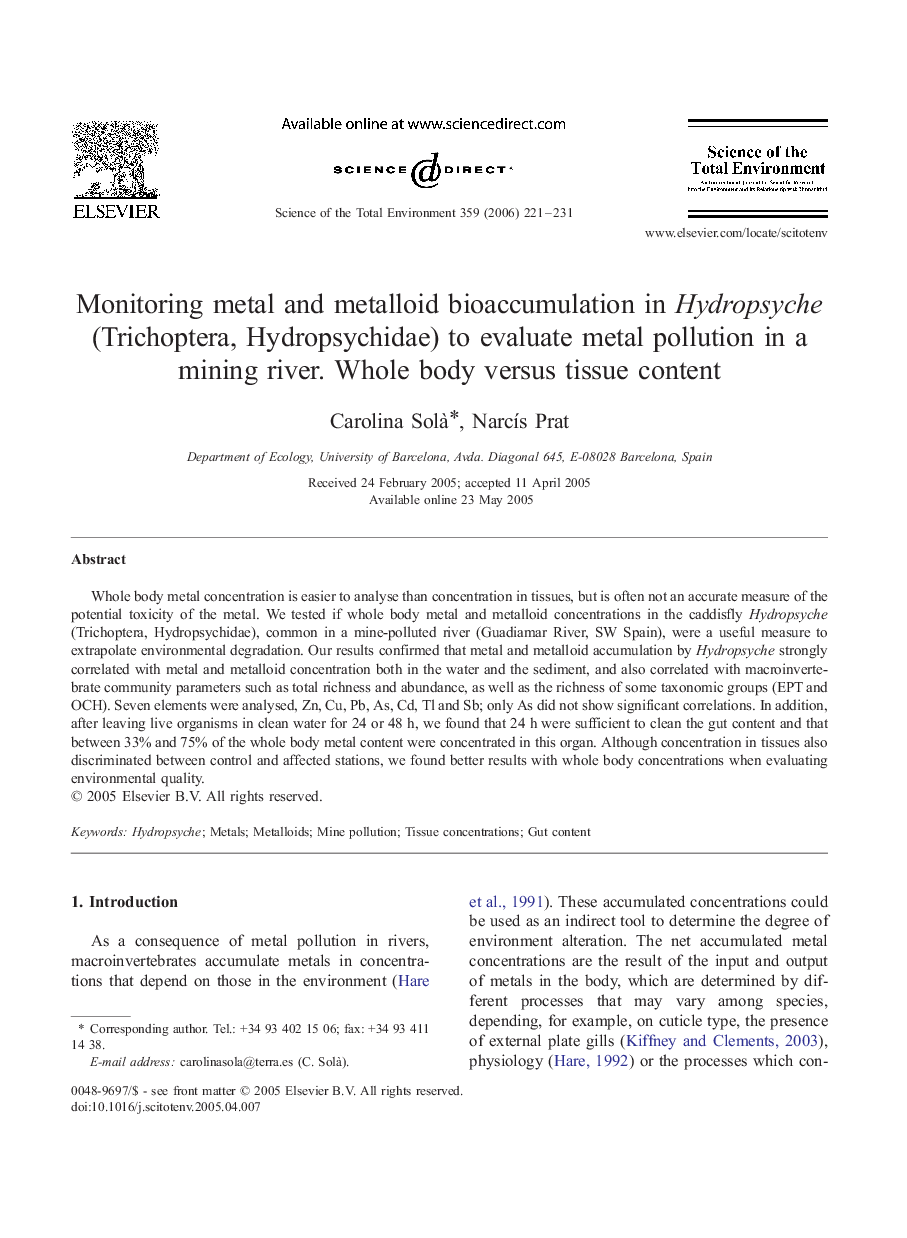| Article ID | Journal | Published Year | Pages | File Type |
|---|---|---|---|---|
| 4434330 | Science of The Total Environment | 2006 | 11 Pages |
Whole body metal concentration is easier to analyse than concentration in tissues, but is often not an accurate measure of the potential toxicity of the metal. We tested if whole body metal and metalloid concentrations in the caddisfly Hydropsyche (Trichoptera, Hydropsychidae), common in a mine-polluted river (Guadiamar River, SW Spain), were a useful measure to extrapolate environmental degradation. Our results confirmed that metal and metalloid accumulation by Hydropsyche strongly correlated with metal and metalloid concentration both in the water and the sediment, and also correlated with macroinvertebrate community parameters such as total richness and abundance, as well as the richness of some taxonomic groups (EPT and OCH). Seven elements were analysed, Zn, Cu, Pb, As, Cd, Tl and Sb; only As did not show significant correlations. In addition, after leaving live organisms in clean water for 24 or 48 h, we found that 24 h were sufficient to clean the gut content and that between 33% and 75% of the whole body metal content were concentrated in this organ. Although concentration in tissues also discriminated between control and affected stations, we found better results with whole body concentrations when evaluating environmental quality.
